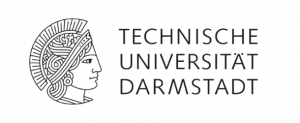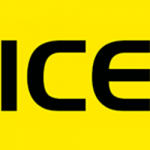Quantum News Briefs June 5: Scientists propose quantum proof-of-work consensus for blockchain; How quantum technologies will help the U.S. military keep its edge with ‘Quantum Transition Acceleration’; Optical effect advances quantum computing with atomic qubits to a new dimension + MORE

Quantum News Briefs June 5: Scientists propose quantum proof-of-work consensus for blockchain; How quantum technologies will help the U.S. military keep its edge with ‘Quantum Transition Acceleration’; Optical effect advances quantum computing with atomic qubits to a new dimension + MORE.
Scientists propose quantum proof-of-work consensus for blockchain
 A team of researchers from universities in Australia and the United States, working in collaboration with quantum technology company BTQ, recently published research proposing a novel proof-of-work (PoW) scheme for blockchain consensus that relies on quantum computing techniques to validate consensus. Quantum News Briefs summarizes a June 1 article by Tristan Green in CoinTelegraph.
A team of researchers from universities in Australia and the United States, working in collaboration with quantum technology company BTQ, recently published research proposing a novel proof-of-work (PoW) scheme for blockchain consensus that relies on quantum computing techniques to validate consensus. Quantum News Briefs summarizes a June 1 article by Tristan Green in CoinTelegraph.
Dubbed “Proof-of-work consensus by quantum sampling,” the preprint research paper details a system that the authors claim “provides dramatic speedup and energy savings relative to computation by classical hardware.”
According to the researchers, current algorithms for solving PoW consensus puzzles are slow and require a significant amount of computation resources to process.
According to the paper, the quantum advantage provided by this scheme would also increase the difficulty of mining, thus making it possible to “maintain consistent block mining time” as the number of miners increases, further incentivizing continuing participation of “quantum miners.”
According to the researchers, it may be the perfect solution for future-proofing blockchain applications and, potentially, lowering the environmental impact of mining on the Bitcoin blockchain and similar chains.
Aside from quantum advantage, quantum hardware also has a leg up on old school computers due to the nature of how blockchain mining works. Mining is, as the researchers put it, a problem that is “progress-free.” No matter how many times a blockchain puzzle is solved to provide proof-of-work, the computer and algorithms processing the challenges don’t ever get any better at solving the problem.
This means that quantum computers, despite being notoriously challenging to develop and expensive to build and maintain, would ultimately be capable of validating consensus more efficiently than state-of-the-art classical systems. Click here to read article in-entirety.
How quantum technologies will help the U.S. military keep its edge with ‘Quantum Transition Acceleration’
 John Oncer, Editor, Photonics Online authored a June 2 editorial describing how quantum technology promises to keep militaries that harness its power one step ahead of those that don’t. Quantum News Briefs summarizes with attention to one one specific program the U.S. Department of Defense (DoD) is putting in place to capitalize on all they have to offer – a new-start project referred to as Quantum Transition Acceleration.
John Oncer, Editor, Photonics Online authored a June 2 editorial describing how quantum technology promises to keep militaries that harness its power one step ahead of those that don’t. Quantum News Briefs summarizes with attention to one one specific program the U.S. Department of Defense (DoD) is putting in place to capitalize on all they have to offer – a new-start project referred to as Quantum Transition Acceleration.
“The Office of the Secretary of Defense is requesting $75 million in fiscal 2024 to initiate a brand-new pursuit intended to both accelerate the commercialization and operationalization of quantum devices for Pentagon purposes and mature the U.S. supply chain underpinning the making of emerging quantum technologies,” reports DefenseScoop.
The DoD has, as part of its latest batch of budget justification documents, added a new-start project referred to as Quantum Transition Acceleration. “The [DOD’s] research and development of quantum technologies is critical to maintaining the nation’s technological superiority,” officials wrote in the Defense-wide justification book for fiscal 2024 budget estimates.
“Quantum technology is approaching a tipping point that will determine how quickly it can make an impact. If the [U.S.] can stay on pace, many important outcomes for the [DOD] can be realized including robust position, navigation, and timing for DOD freedom of operations with precision strike even with contests in spectrum, space, or cyber operations,” Pentagon officals wrote in the budget justification documents.
Pentagon officials expect quantum technologies to “lead to ‘rapid advances in materials and chemistry for advanced energetics, propulsion, and platform coatings’ — as well as enable nascent optimization techniques for stealth properties, logistics, and machine learning.
“Quantum tech might also drastically enhance electromagnetic spectrum capabilities, which they said holds promise to supply DOD with “significant advantages” associated with electronic warfare, intelligence collection, and more.”
As for the $75 million requested for the Quantum Transition Acceleration project, $45 million would go to “maturing, demonstrating, and transitioning quantum inertial sensors, gravity sensors, atomic clocks, and quantum electromagnetic sensors. The balance would be used for “identifying, developing, and maturing critical components supporting technology for atomic clocks, quantum sensors, and quantum computers” — and ultimately help “accelerate the transition of laboratory-scale systems to manufacturable commercial products.” Click here to read June 2 PhotonicsOnline article in-entirety.
Optical effect advances quantum computing with atomic qubits to a new dimension
 Darmstadt physicists have developed a technique that could overcome one of the biggest hurdles in building a practically-relevant quantum computer. They make use of an optical effect here discovered by British photo pioneer William Talbot in 1836. The team is led by Malte Schlosser and Gerhard Birkl from the Institute of Applied Physics at Technische Universität Darmstadt. Quantum News Briefs summarizes the June 3 Phys.org article.
Darmstadt physicists have developed a technique that could overcome one of the biggest hurdles in building a practically-relevant quantum computer. They make use of an optical effect here discovered by British photo pioneer William Talbot in 1836. The team is led by Malte Schlosser and Gerhard Birkl from the Institute of Applied Physics at Technische Universität Darmstadt. Quantum News Briefs summarizes the June 3 Phys.org article.
Qubits can be realized in different ways. Individual atoms are also excellent for this purpose. To control these in a targeted manner, single-atom qubits must be held in a regular lattice, similar to a chess board.
Physicists usually use an “optical lattice” of regularly arranged points of light for which is formed when laser beams cross each other. “If you want to increase the number of qubits by a certain factor, you also have to correspondingly increase the laser output,” explains Birkl.
His team produces the optical lattice in an innovative way. They shine a laser onto a glass element the size of a fingernail, on which tiny optical lenses are arranged similar to a chess board. Each microlens bundles a small part of the laser beam, thereby creating a plane of focal points, which can hold atoms.
Now, the Talbot effect is occurring on top, which has so far been considered a nuisance: the layer of focal points is repeated multiple times at equal intervals; what are known as “self-images” are created. Therefore, an optical lattice in 2D becomes one in 3D with many times the points of light. “We get that for free,” says Malte Schlosser, the lead author of the work. He means that no additional laser output is required for this. According to Schlosser, conventional lasers can be used to quadruple the power in the future.
Schlosser emphasizes that the technology is not limited to quantum computers. “Our platform could also potentially be applicable to high-precision optical atomic clocks.” The Darmstadt team plans to further develop its new qubit platform and envisages a variety of possible applications in the field of quantum technologies. Click here to read article in-entirety in June 1 Phys.org.
Singapore’s telcos, banks, data centres urged to explore use of quantum security at new Quantum Networks Experience Centre
 Singapore’s newly launched experience centre, dubbed the Quantum Networks Experience Centre, at research and development hub one-north hopes to accelerate the adoption of new cyber-security software to fend off hackers who could soon wreak havoc with quantum technology. Quantum News Briefs summarizes original article below.
Singapore’s newly launched experience centre, dubbed the Quantum Networks Experience Centre, at research and development hub one-north hopes to accelerate the adoption of new cyber-security software to fend off hackers who could soon wreak havoc with quantum technology. Quantum News Briefs summarizes original article below.
The Quantum Networks Experience Centre was launched last week by National University of Singapore’s quantum security systems spin-off SpeQtral in partnership with Japanese firm Toshiba. The centre aims to promote the adoption of quantum-secure systems in the region.
It is hoped that national agencies and private enterprises such as telcos, banks and data centres can explore commercial uses for the technology.
The effort is backed by the National Research Foundation, Temasek and national institutions such as Enterprise Singapore and the Economic Development Board.
SpeQtral chief executive Lum Chune Yang said: “In terms of general knowledge about quantum communications, it is nowhere near what it needs to be.” On show at the launch is a quantum key distribution (QKD) system – seen by experts as a crucial step towards building an unhackable Internet.
Toshiba is in the midst of testing quantum data transfers through longer distances of fibre optics.
SpeQtral will launch a satellite – the SpeQtral 1 – into space by 2024 to facilitate intercontinental quantum key distribution. Mr Tezuka, an expert in Toshiba’s QKD business unit, said Singapore’s small size and robust network infrastructure give it an advantage in deploying quantum systems. “Singapore is a very important market as it can be a showcase to the world of how quantum can be adopted,” he said.
This allows encryption keys to be exchanged between Singapore and Europe – a way forward for quantum communications on a global scale. Click here to read complete article in Straits Times.
Sandra K. Helsel, Ph.D. has been researching and reporting on frontier technologies since 1990. She has her Ph.D. from the University of Arizona.





















